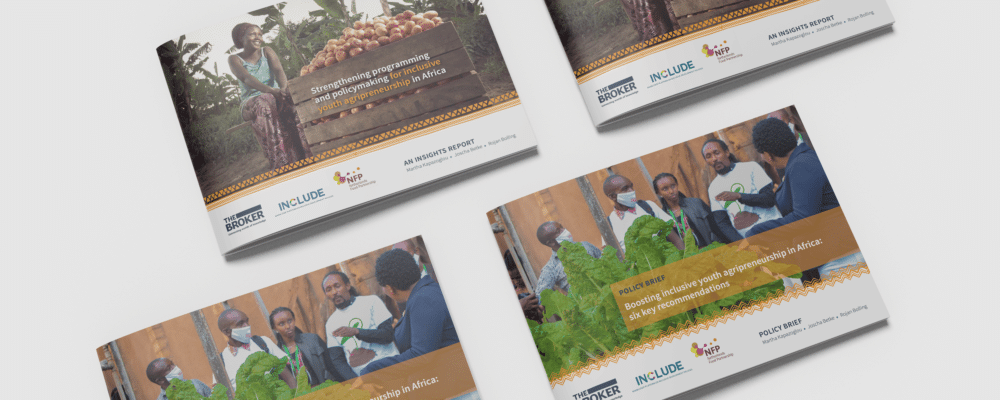
Best practices to increase employment and earnings for vulnerable workers and businesses
Women and youth globally face barriers to finding decent work and to starting and growing their own businesses. This will become even more challenging in a world facing sudden economic contraction like we see today in response to the global coronavirus pandemic, so maximising economic opportunities for them is essential.
Part of our work at INCLUDE is to gather knowledge on what works best to increase employment, earnings and skills in low- and middle-income countries, particularly for vulnerable groups. A recent blog series, written by Paul Thissen for 3ie, summarises the findings of three systematic reviews comparing interventions aimed at helping women, youth and SMEs in LDCs to improve their economic outlook. Here, we draw upon some of the blogs’ overarching conclusions, aiming to filtering out best practices for the coming period to avoid these groups being hit hardest by the global recession. The blogs are summarised individually in more detail below.
Highlights:
- Numerous programs have attempted to reduce levels of unemployment and vulnerability by enabling entrepreneurship and stimulating job creation, but with varying success depending on program type, design, implementation, target group and location.
- The positive effects of certain programs appear in both low- and high-income countries, for disadvantaged and non-disadvantaged youth alike. Even though some policies are context-specific, it seems that programs like skills training, business knowledge and, in certain forms, microcapital can be universally beneficial to those seeking jobs or trying to start a business.
- A significant lack of evidence exists to support interventions in subsidised employment and employment services. The central argument is that these types of programs fail to remove structural barriers to work, rendering them superficial. Evidence for microfinance programs is also weak, although they are hard to compare given vast differences in design and implementation.
- The strongest evidence is for interventions which promote skill development, business knowledge and business development. These interventions appear most effective when targeted at small (but not micro) firms, and often show the highest returns in low-income countries, making them a promising option for reducing certain inequalities.
- A lack of data is available on what types of businesses are formed as a result of these programs, and what is their longevity. Moreover, increasing employment and earnings does not necessarily mean youth are no longer in poverty, or will never return to poverty. More information is needed on the long-term impacts and sustainability of interventions.
1. What gets youth into jobs around the world? Train them in a skill.
This blog highlights the positive effects of skills training programs in a wide range of contexts (low- and high-income, for disadvantaged and non-disadvantaged youth alike). This contrasts sharply with a lack of evidence supporting other active labour market policies, such as subsidised employment and employment services (e.g. job matching, interviews and resume writing). In particular, job-specific technical skills, literacy, numeracy and non-technical skills are found to be most effective. Skills programs tend to have the largest impact on earnings in low-income countries, which is promising for reducing inequalities between countries. The impact on inequality within countries depends critically on who has access to the programs.
2. Entrepreneurship promotion gets people working in low- and middle-income countries.
Entrepreneurship programs, particularly those which enhance business skills in conjuction with boosting access to capital (e.g. start-up grants and occasionally microfinance), have the biggest impact on employment and earnings of all types of intervention, and complement skills training programs. A few caveats emerge, however. First, the studies on entrepreneurship in the systematic reviews generally have smaller dataset, making conclusions on skills training more robust. Second, it is not clear whether these programs recruit youth who have already undergone skills training or select from the same pool of (unemployed) youth, and therefore whether these interventions can be compared in terms of impact or efficiency.
3. What works to get firms hiring? Support small businesses – but not the smallest ones.
This blog tackles the question of where to target interventions to encourage firms to hire more people. The review found that initiatives aimed at firm expansion were most effective for firms with 5-19 employees, and less effective for those with 20-250 employees. Micro firms (0-5 employees) also responded weaker to programs, which was attributed to the relatively high upfront costs of hiring one extra worker. Regarding the type of intervention, microfinance programs on their own were the least successful, although differences in design and implementation make it difficult to draw valid conclusions. It was not concluded which other types of program are more effective (the study looked at business development, technical assistance, training, tax simplification, matching grants and export promotion), though business development services seem to create better employment outcomes overall.
4. Vocational training helps women find better employment.
This blog shows that vocational training raises earnings, employment and formal employment for women by 5%, 11% and 8% respectively. The study focused on training programs in medium- to high-skilled occupations and excluded studies on low-skilled jobs (auch as agriculture or domestic work). The largest impact was found for gender-specific programs (those tackling barriers created by gender norms) as well as programs in Asia & Africa. Programs with a life skills component or internship yielded large effects on earnings, but not on employment, suggesting that life skills are not enough to secure a job on their own, but can yield benefits within a job or firm.










